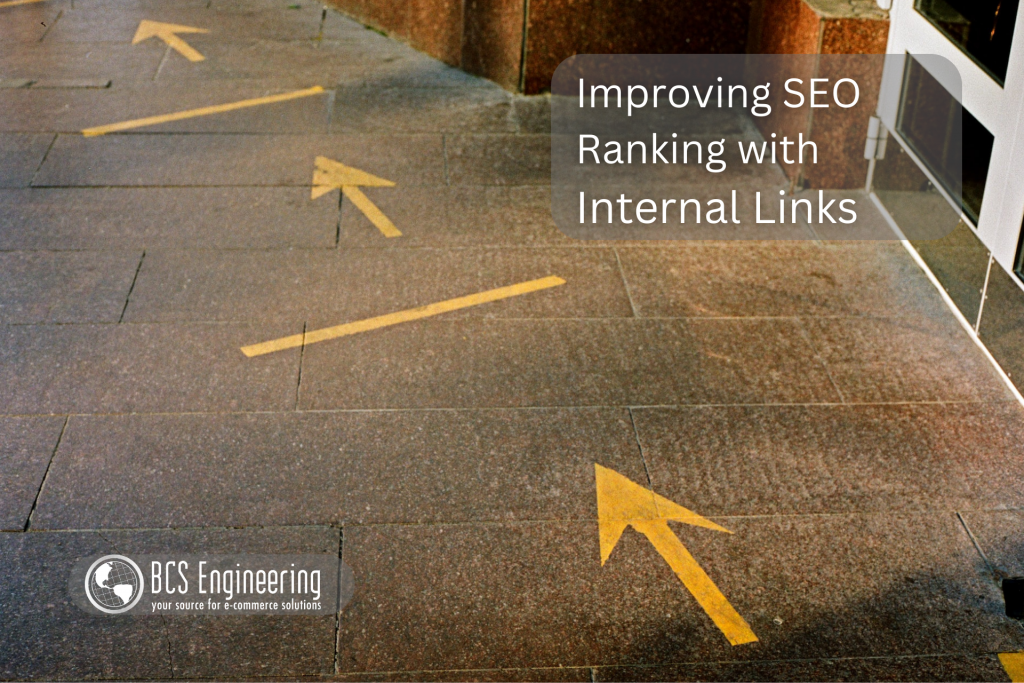There are many ways that we can increase our search engine ranking with Search Engine Optimization (SEO). However, one of the simplest ways that we can optimize our website is through internal linking.

What is Internal Linking?
As described in our article on SEO and site structure, internal links are links that connect a page on your website to another internal page. There are many places where we can put internal linkage. To list a few, we can find internal links in:
- Navigation Menus – These menus, usually located at the top or side of your webpage, aid in structuring your pages and making it easier for users to access your most important content.
- Taxonomies – Taxonomies are categories and tags given to pages that allow you to group certain pages together. These tags can be internally linked to in order to provide more related content to users as well as guide search engines into understanding the relationships between certain pages.
- Articles – In blogs, we often embed URLs into our content to guide users to similar pages or next step options that they can take.
- Related Post Sections – Located usually at the bottom of a page or blog post, these lists contain links to similar content on your website that users may be interested in.
What are the Benefits of Internal Linking?
Guides Users on Your Site
Rather than linking externally, where we send users to a different website entirely, internal linking keeps users exploring our content. For users, these links help them navigate your website with ease. On your homepage or navigation bar, internal links offer simple ways for users to explore the content you have to offer. They also help in suggesting related content to your users, such as linking a related blog post to another existing blog.
Helps Google Understand Your Content
While internal links help in showing users more of your content, they also help search engines understand your website. For Google, internal links help establish what relationship your pages have. By linking two pages together, you are suggesting that these pages share something in common. This can help Google understand what content you specialize in as well as well as what content they should suggest to your users next.
Internal links also aid Google in figuring out what pages you value the most. This concept is called link value. For example, your homepage is often filled with links to your content. It also is often back-linked to on other pages. This makes its’ link value very high since Google assumes that, by having this page linked often to other pages, it must be very important.
Note: Importance of Shared Link Value
An important aspect to understand about link value is that a pages’ link value is shared to the other links on its’ page. Thus, by linking a page to your homepage, that link will be deemed more valuable as compared to if it was linked elsewhere.
How do I choose what content to link?
While we have gone over some of the places we can put internal links as well as the benefits these links bring, the question of which pages to link to can be difficult when you have a lot of content to share. The best rule of thumb is to internally link to your best content. This is content that is of high quality, is complete, and is important to your business goals. Your best content is the content that you want users see when searching for your products and topics of expertise. By linking your most quality content, you are telling Google and your users that you consider these pages to accurately reflect your company and what you have to offer.
By choosing your best content, the process of deciding what content to link to should become easier. Add many links to these quality pages around your site to emphasize their importance. For example, your homepage tends to be very important to explaining who you are and what you do. Linking your homepage in multiple places will help search engines understand that this page is valuable to share to users searching for your content.
Note: A warning about Link Stuffing
While internal links are very useful, too many of them can be harmful. As with keywords, link stuffing is a method that no longer works as well as it once did. With the advancements of search engines, Google can recognize when you are adding links for the sake of having them, so pick and choose your links carefully and only link them in places where it makes sense. For example, while we could link every mention of SEO to one of our blog posts, that would negatively impact our SEO ranking. Instead, keep things light, but consistent. In our case, one mention of our important related blogs is good enough to show Google how our pages relate.
Want to Learn More about SEO?
Improving your SEO is a continuous process that will require consistent maintenance as your site grows and SEO requirements change. The same can be said for your website as a whole. Carrie Saunders’ upcoming course, “The Converting Website,” will dive into SEO and other important factors that aim to optimize your website. Join the waitlist today to stay up to date on the classes release!
